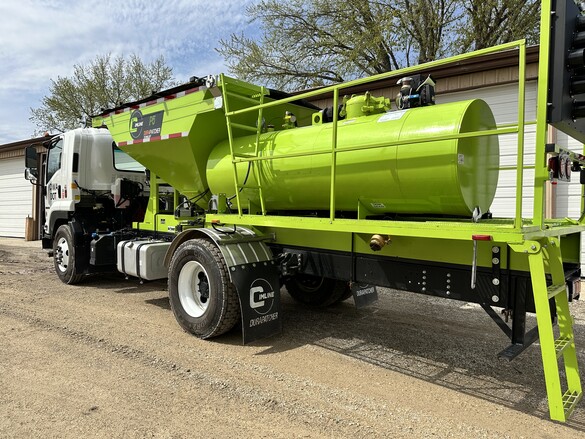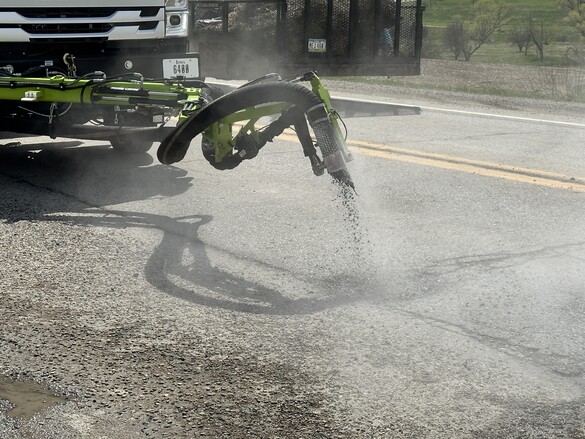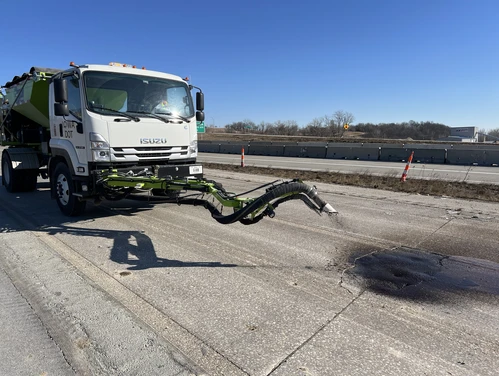As long as there have been paved roads in Iowa, there have been potholes to patch. Iowa’s freeze-thaw cycle challenges midwestern pavement - creating crevices at seams that allow water to seep into cracks and weaken the surface.
The Iowa DOT fills hundreds of potholes every year using conventional hot and cold mix pothole filling solutions that pair a dump truck and a trailer-mounted hopper, and at least two or three staff to spread the material with shovels and compaction tools. But there’s a safer, simpler, and more efficient technology to fill those annoying potholes.
Safer, simpler system
Earlier this year, the DOT purchased the state’s first self-contained pothole filling truck. The Cimline Durapatcher is currently operating in District 4 based in Council Bluffs and District 1 based in Ames. This innovative unit is a self-contained vehicle that mixes and applies emulsion in a fraction of the time. And the labor required? One person.
After the tragic I-80 work zone crash that killed District 4 staff member Matt Dickerson near Council Bluffs in 2024, field staff and leadership have sought out safer ways to accomplish routine work like patching. “The ability to remove staff from the operation takes more employees off the road and increases safety. It puts one in a truck cab that protects the operator and it eliminates others who could be doing a different task for the day,” says DeSoto/Perry Garage Maintenance Supervisor Cory Kirkpatrick.

“With no staff on the roadway and faster filling, this truck also reduces the disruption to the public, so we’re able to provide a higher level of service to our customers,” Kirkpatrick adds.
Self-contained machine handles every step of process
The single pothole patching machine that preps and installs a patch in minutes without the need for compaction. The truck chassis houses a hopper to hold the supply of rock chips and a 300-gallon heated oil tank that together produce enough product to apply approximately 10 tons of patch material.

Inside the cab, the operator uses a joystick to control mixing and pump the emulsion (oil) and rock material forward to a hydraulic arm and nozzle in the front of the unit. When the Durapatcher approaches a pothole, the operator can activate a compressor to clear debris and water.
The next step is to spray the emulsion to fully coat the inside of the pothole, followed by the application of a rock and emulsion mixture. “We’re looking for a salt and pepper look with the black emulsion oil and the light-colored rock.

Then we’re adding another layer of clean rock over the top to protect the public’s vehicles from the oil,” says Matt Conaway with the DeSoto Maintenance Garage.
As the maintenance shops continue to learn more about operating the new system, reviews are positive as staff find the new technology to be more streamlined than the conventional dump truck and trailer method. They report that the system is instinctive to new operators and allows them to get closer to the pothole to see where levelling is needed to provide a better seal and more comfortable ride for the public.
